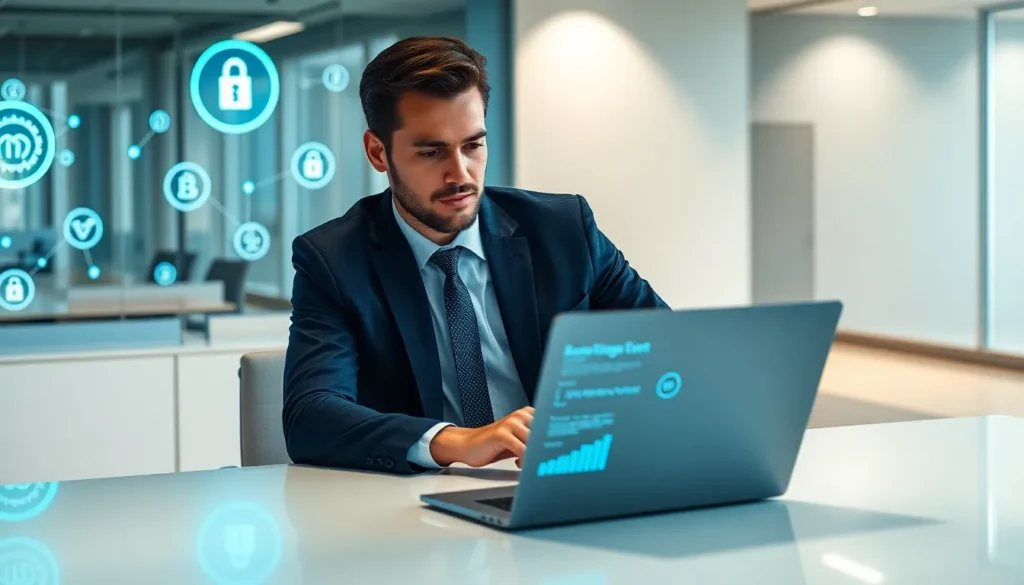Table of Contents
ToggleIn the expansive world of digital assets, the phrase ‘bitclassic encryption’ might sound like technobabble to some. But, it’s crucial for anyone looking to the future of digital ownership. If you’ve ever wanted to spice up your digital collection with a lava skin, understanding the encryption behind your assets isn’t just wise: it’s essential. Imagine securing your prized virtual items with the same cutting-edge technology that protects your bank details, pretty reassuring, right? Let’s crack open this topic and explore how to do it while keeping the tech jargon at bay.
Understanding Bitclassic Encryption

The Role of Encryption in Digital Assets
Encryption serves as the backbone of security in digital transactions. In the simplest terms, it transforms data into a code, making it nearly impossible for anyone without the proper key to decipher it. This application is crucial, especially with the rise in digital assets, where ownership and authenticity directly correlate with their value.
With bitclassic encryption, users can rest easy knowing that their digital treasures are less prone to theft or fraud. By implementing robust encryption protocols, you’re not just securing a purchase: you’re investing in peace of mind.
How Bitclassic Encryption Works
Bitclassic encryption employs advanced algorithms that scramble your data as it travels across networks. Each transaction you make is wrapped in layers of security, much like an onion, quite a nutritious metaphor, isn’t it?
When you buy or sell an asset like a lava skin, this process encrypts vital information, such as your wallet address and transaction amount, before it goes public on the blockchain. This way, only the intended recipient can unlock the data. It makes any attempts at interception or tampering with the transaction an uphill battle for cybercriminals.
Benefits of Bitclassic Encryption
Bitclassic encryption isn’t just a fancy term: it comes with practical benefits. For starters, it enhances transaction security. Whether one is newly diving into the world of crypto or an established player, the added layer of protection is invaluable.
Besides, it fosters trust in the marketplace. Knowing that significant transactions are safeguarded by a solid encryption method can encourage more participants to join in the fun of trading digital assets. Eventually, this boosts market liquidity and encourages new innovations, allowing the digital asset space to flourish.
Navigating the Purchase of Lava Skins
Choosing the Right Marketplace for Lava Skins
When it comes to purchasing lava skins, picking the right marketplace is akin to choosing between a bustling bazaar and a dodgy street corner. Established platforms come with their own systems of protection, often incorporating bitclassic encryption to secure transactions. Research them thoroughly: check for reviews and confirm their reputation before diving into the lava.
Step-by-Step Guide to Securing Your Purchase
- Research your options to find trustworthy marketplaces.
- Create a secure wallet: Opt for wallets that incorporate bitclassic encryption.
- Verify the seller’s reputation: Look for verified sellers with good ratings.
- Finalize the purchase: Once you feel comfortable, proceed to buy your lava skin, ensuring the transaction is encrypted.
- Confirm your purchase: Keep your transaction ID and wallet balance handy for any future reference.
Best Practices for Storing Your Lava Skins
Storing your lava skins correctly is as important as purchasing them securely. Here are some best practices to keep them safe from unwelcome guests:
- Use a Hardware Wallet: For the best security, consider a hardware wallet, which stores your skins offline, significantly reducing the risk of online theft.
- Enable Two-Factor Authentication (2FA): Always turn on 2FA for additional security on any platform where you store your digital assets.
- Regularly back up your data: Do this to ensure that you can recover your skins in case of hardware failure.
- Stay informed: Keep up with the latest security trends to avoid pitfalls that could lead to loss.
Future Trends in Digital Asset Protection
As technology continues to evolve, the need for more robust encryption methods will only heighten. Several emerging trends could shape the future of digital asset protection:
- Quantum Computing: This could either pose a threat or bring revolutionary changes, depending on how encryption methods adapt.
- AI-powered Security: Utilizing artificial intelligence to detect and respond to threats could enhance protection for digital assets dramatically.
- Regulatory Compliance: As governments develop stricter regulations around digital currencies, compliance will significantly shape how marketplaces operate.







